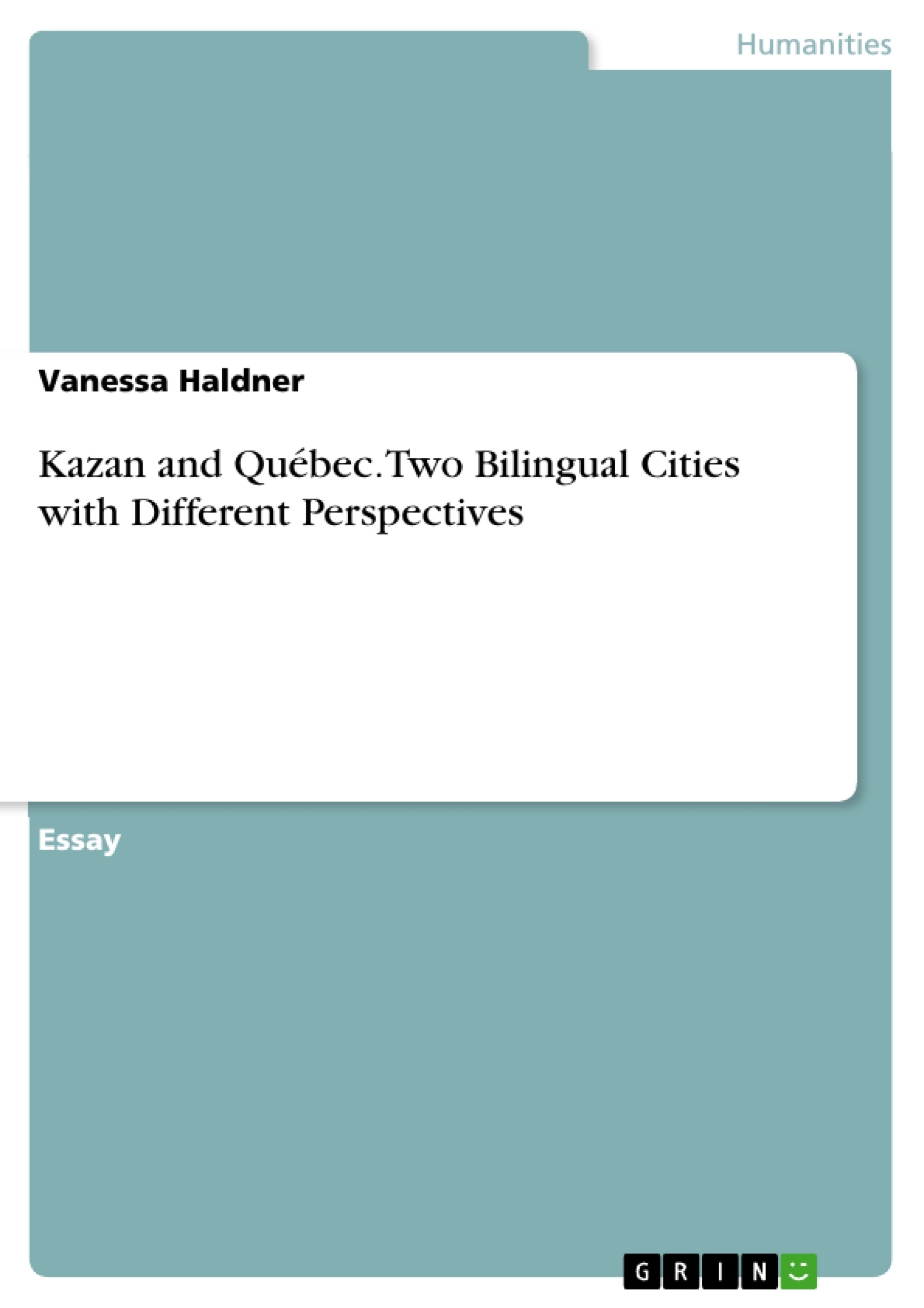A comparison between two bilingual cities, Kazan and Quebec. This essay reflects the friendship between Russian and Tartar people in Kazan and the conflict between the English-speaking and French-speaking population in Quebec.
Inhaltsverzeichnis (Table of Contents)
- Québec and Kazan - Two Bilingual Cities with Different Perspectives
- Québec
- Historical Background
- Language
- Kazan
- Historical Background
- Language
- Comparison of Québec and Kazan
Zielsetzung und Themenschwerpunkte (Objectives and Key Themes)
This assignment compares the bilingual cities of Québec and Kazan, exploring how their differing historical, economic, political, and social contexts shape their cultural diversity and citizen attitudes. By examining the historical background and language dynamics of both cities, the analysis seeks to reveal the distinct atmospheres and cultural identities that have emerged in each location.
- The impact of historical events on cultural diversity and attitudes toward bilingualism
- The role of language in shaping the image of a city and its cultural identity
- The consequences of language policies and conflicts on social cohesion and community life
- The relationship between historical burdens and the ability to foster multiculturalism
- The contrasting approaches of Québec and Kazan in navigating cultural differences and achieving peaceful coexistence
Zusammenfassung der Kapitel (Chapter Summaries)
- Québec and Kazan - Two Bilingual Cities with Different Perspectives: This introductory section sets the stage for the comparative analysis of Québec and Kazan, highlighting their contrasting perspectives on cultural diversity. It emphasizes the importance of understanding historical context and language dynamics in shaping the image and identity of a city.
- Québec: This section delves into the historical background of Québec, focusing on the interplay of French and British influences and the resulting linguistic and cultural conflicts. It discusses key events like the British occupation, the Quebec Act of 1774, and the Charter of the French Language, exploring their impact on the language situation and the tension between Francophone and Anglophone communities.
- Kazan: This section examines the historical background of Kazan, highlighting the interaction of Tatar and Russian cultures. It discusses the city's foundation, its period under the Golden Horde, the Russian occupation, and the subsequent efforts to foster coexistence and cultural understanding. The section emphasizes the role of religious tolerance and the development of bilingualism in creating a harmonious multi-cultural society.
- Comparison of Québec and Kazan: This section draws a comparison between Québec and Kazan, highlighting the contrasting approaches to managing cultural differences and promoting bilingualism. It analyzes the impact of historical events on the present-day cultural atmosphere, contrasting the tensions in Québec with the relative harmony in Kazan. The section emphasizes the importance of language and history in shaping the image and identity of a city.
Schlüsselwörter (Keywords)
This assignment focuses on the comparative analysis of Québec and Kazan, exploring key themes related to bilingualism, cultural diversity, historical context, and the impact of language policies on social cohesion. Key concepts include: bilingualism, cultural diversity, historical context, language policies, social cohesion, cultural identity, language conflict, multiculturalism, coexistence, and the image of the city.
- Arbeit zitieren
- Vanessa Haldner (Autor:in), 2016, Kazan and Québec. Two Bilingual Cities with Different Perspectives, München, GRIN Verlag, https://www.hausarbeiten.de/document/379352


